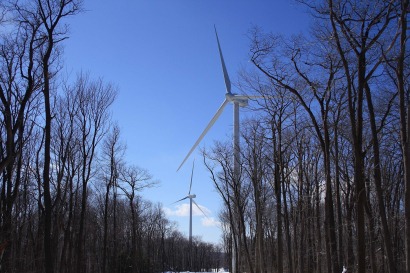
The policy would have imposed a minimum distance between new wind turbines and residential housing, to the extent that no turbines at all would have been able to be built in Wiltshire. However, local green campaign group Wiltshire Clean Energy Alliance appealed with the result that planning inspector Andrew Seaman ordered the council to withdraw the measure from its Core Strategy. The group have been pushing for the withdrawal of the policy since it was introduced in 2012.
Other groups besides WCEA also appealed against the amendment, including Wiltshire Wildlife Trust, the local head of the Council for the Protection of Rural England (CPRE) and an independent expert. Apart from officers of Wiltshire County Council no-one supported the amendment when it was presented before the Planning Inspectorate at Trowbridge Civic Centre on May 26th 2013.
The council passed the amendment on the grounds of perceived risk from turbine blades shearing off and causing injury. It sought to impose minimum distances between wind turbines and residential properties of up to 3 kilometres for turbines over 150 metres high.
“Planning policy should be open-minded and unbiased and wind farm applications should be judged on a case-by-case basis, in line with national policy, which already has robust guidance on appropriate locations for wind turbines” said WCEA co-ordinator Sophy Fearnley-Whittingstall. “Since this policy was introduced almost two years ago, all forms of wind development in Wiltshire – both commercial and community – have been on hold, which is a shame. Now we will have a stronger policy that will set an important precedent for other local authorities.”
The first project to benefit from the government ruling may be the prospective Thoulstone Farm wind farm near Chapmanslade which had previously been shelved in response to the council policy.
“Wind provides efficient, carbon-free fuel, and renewable energy now plays an integral role in ensuring the lights stay on in Britain” added Ms Fearnley-Whittingstall. “Between November 2013 and January 2014 renewables provided 18.4% of UK electricity, with the majority coming from onshore wind. This was only a little behind nuclear and gas.”
Wiltshire’s carbon emissions are currently 18 percent higher than the UK national average according to a Wiltshire Wildlife Trust report. The county also contributes the second lowest level of renewable energy instalment in South West England, representing only 8.9 percent of the regions total. It has a total potential renewable energy capacity of 376MW with the two main technologies identified as being able to achieve this being wind and biomass.
For additional information:

